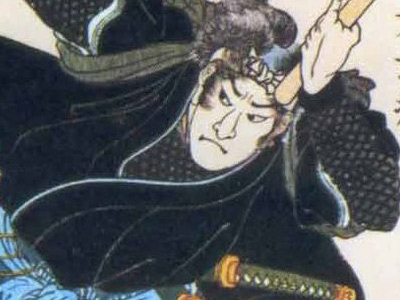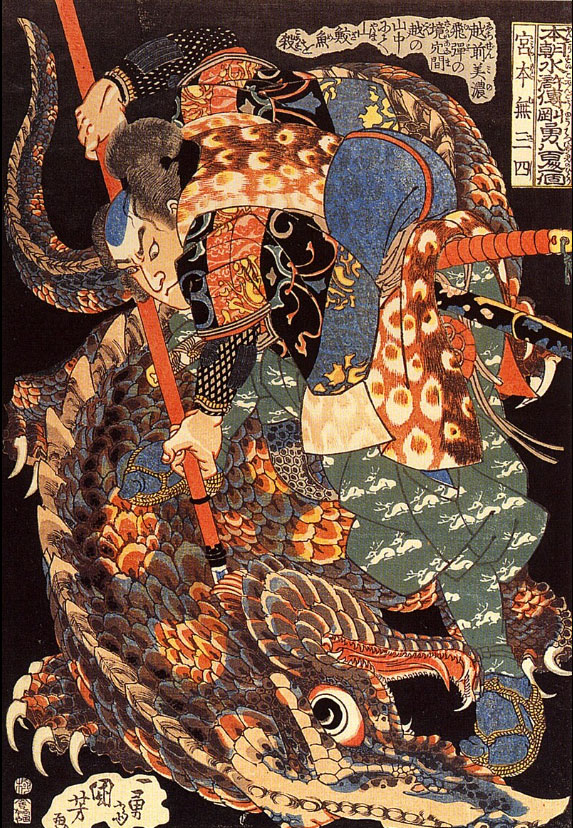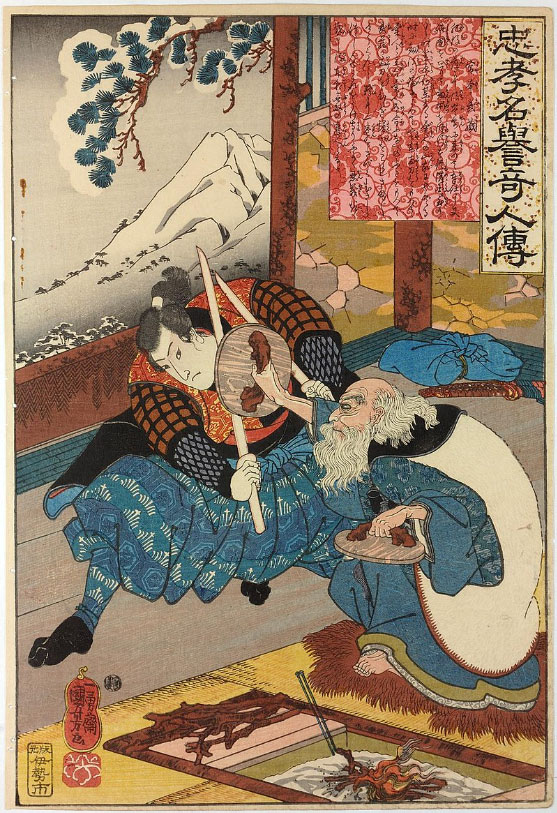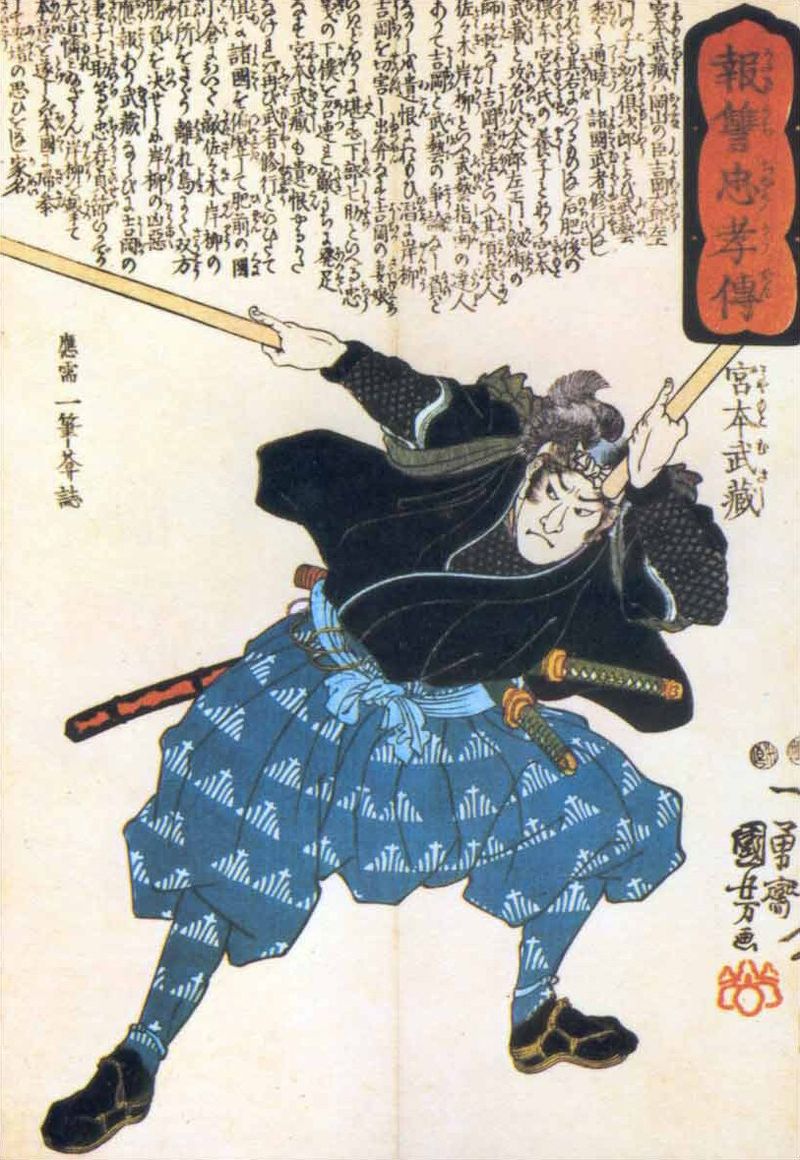Miyamoto Musashi (1584-1645)

Teachings
Musashi created and refined a two-sword kenjutsu technique called niten'ichi (二天一, "two heavens as one") or nitōichi (二刀一, "two swords as one") or 'Niten Ichi-ryū' (A Kongen Buddhist Sutra refers to the two heavens as the two guardians of Buddha). In this technique, the swordsman uses both a large sword, and a "companion sword" at the same time, such as a katana with a wakizashi.
The two-handed movements of temple drummers may have inspired him, although it could be that the technique was forged through Musashi's combat experience. Jutte techniques were taught to him by his father — the jutte was often used in battle paired with a sword; the jutte would parry and neutralize the weapon of the enemy while the sword struck or the practitioner grappled with the enemy. Today Musashi's style of swordsmanship is known as Hyōhō Niten Ichi-ryū.
Musashi was also an expert in throwing weapons. He frequently threw his short sword, and Kenji Tokitsu believes that shuriken methods for the wakizashi were the Niten Ichi Ryu's secret techniques.
Musashi spent many years studying Buddhism and swordsmanship. He was an accomplished artist, sculptor, and calligrapher. Records also show that he had architectural skills. Also, he seems to have had a rather straightforward approach to combat, with no additional frills or aesthetic considerations. This was probably due to his real-life combat experience; although in his later life, Musashi followed the more artistic side of bushidō. He made various Zen brush paintings, calligraphy, and sculpted wood and metal. Even in The Book of Five Rings he emphasizes that samurai should understand other professions as well. It should be understood that Musashi's writings were very ambiguous, and translating them into English makes them even more so; that is why so many different translations of The Book of Five Rings can be found. To gain further insight into Musashi's principles and personality, one could read his other works, such as Dokkodo and Hyoho Shiji ni Kajo.
HISTORY

RESOURCES
This article uses material from the Wikipedia article "Miyamoto Musashi", which is released under the Creative Commons Attribution-Share-Alike License 3.0.
© Stories Preschool. All Rights Reserved.











